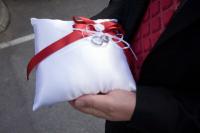Reverse gear: synchronized or not?
Drivers are always amazed that the car sounds different in reverse or that it is difficult to engage. Often it is said that it is because this gear is not synchronized. How can you tell whether a gear is synchronized?
Special features of the reverse gear
- In conventional vehicles with internal combustion engines, there is generally the problem that the engine continues to turn in the same direction as when driving forward, but the transmission does bikes rotates in the other direction when reverse gear is engaged. The car must be stationary and the engine must be idling at a low speed so that this backward-running wheel can get a frictional connection without any problems. This is also the case when the gear is synchronized.
- No matter what gear you drive in, there are always a greater number of gears that ensure that the power of the engine is transmitted to the axles of the car. Knowing that most drivers appreciate a car being quiet, automakers make sure to use gears, the shape of which makes them quiet. In reverse, however, the volume is seldom paid attention to. For this reason, this gear usually sounds loud and completely different from the forward gears. However, as is often assumed, this has nothing to do with synchronization.
So it doesn't matter if reverse gear is synchronized or not, your vehicle will always have a different sound when you reverse. In addition, you are only allowed to shift into gear if the engine turns slowly and the car stops.
This is how you can recognize a synchronized gearbox
In a very simplified way, you can imagine the processes in the car as follows:
- A gear wheel sits on the motor shaft and rotates on it at the motor speed. A second rotates at a different speed, which depends on the rotation of the drive axle. During the shift you want to put these two gears together.
- You can only slide these two gears into each other if one tooth of one of the gears is exactly in one The other's recess fits, so the tooth stands over the recess when you put the wheels on top of each other to move.
- If the gear in question is synchronized, there will be a synchronization ring between these two gears. When you move the gear lever, press this ring onto one of the two gears, it then rotates with it. At the same time, the ring rubs against the other gear and can slide the two gears into one another. You can recognize this synchronization by the fact that you need some strength to engage the gear, but there is no jamming or even a cracking noise. You can feel how the corridor is almost pulled into place.
- In the case of an unsynchronized reverse gear, this synchronization can only be achieved if you carefully accelerate. In some cases, you will even have to turn the engine off in order to put the car into gear. There is also often a bit of a crash when you shift into gear. This is normal if there is no synchronization. If, according to the manufacturer, your car has synchronized reverse gear, but the problems mentioned occur when you engage the gear, you should use a workshop travel. Most likely the ring or similar part responsible for the process is worn or defective.
Shifting without the clutch in a car - you should pay attention to this
The clutch is a very useful part of the car, as it enables a ...
While forward gear synchronization has been common practice in all cars for decades, there are also modern cars that do not have reverse gear synchro- nization.



